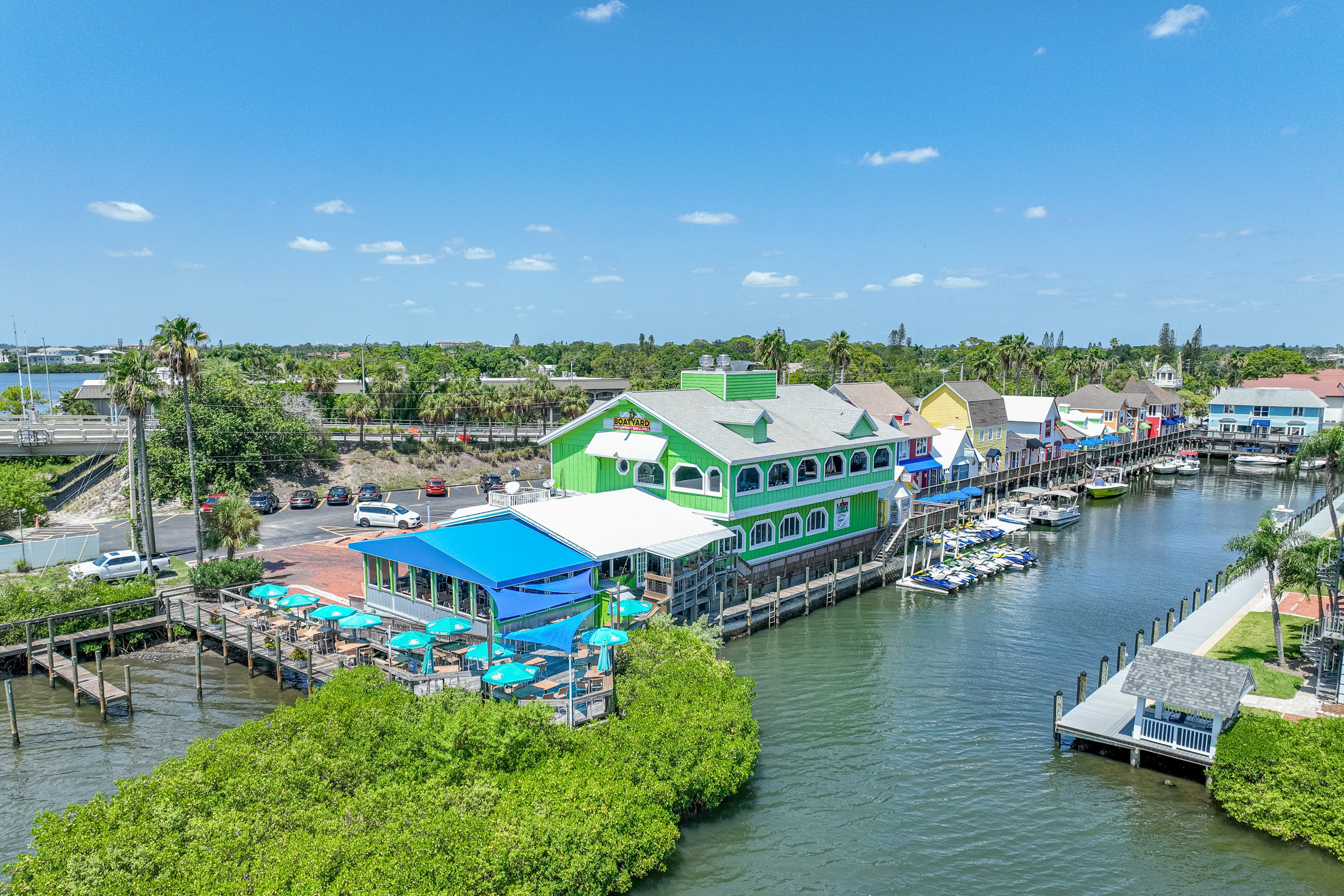New Hotel Proposals Push Siesta Key Residents to Consider Forming Their Own Town
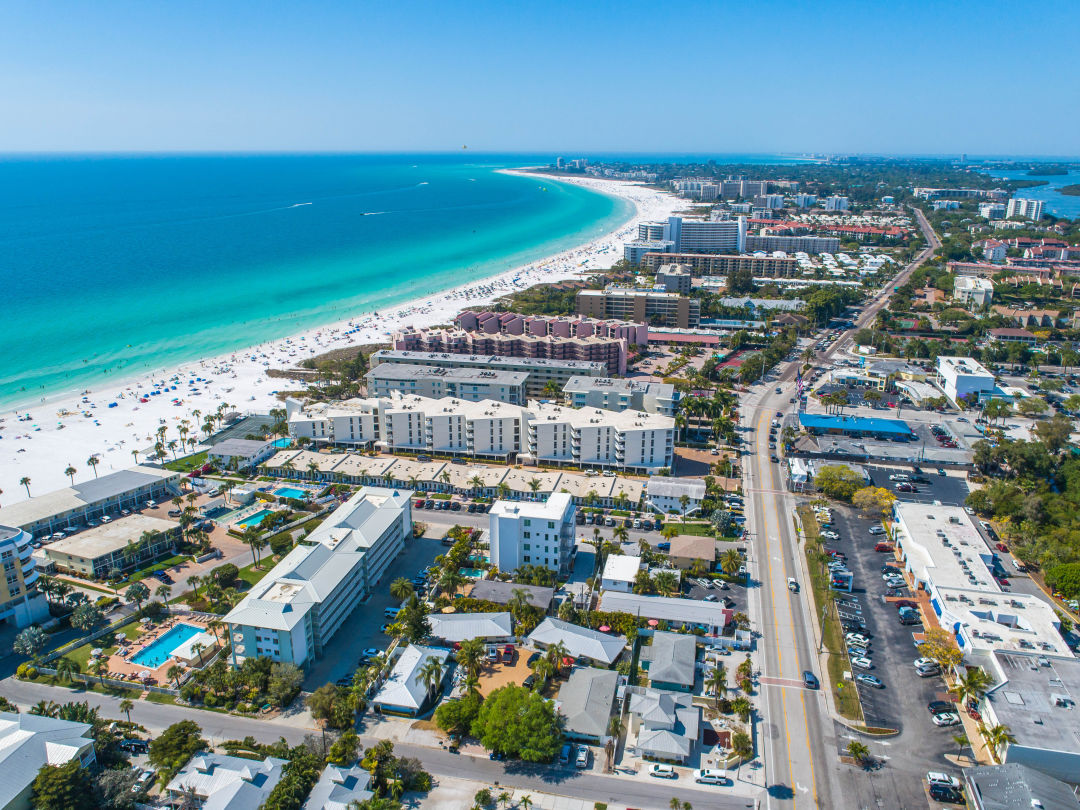
Siesta Key.
The fate of Siesta Key stands at a decision point: What sort of place will it become? And what sort of place do its residents, neighbors and governing bodies want it to be?
Is it an intimate seaside town that welcomes the same guests into long-term rentals year after year? Or is it a burgeoning paradise teeming with hotels and eateries for tourists who zip in and out, desperate for a glimpse of that legendary beach?
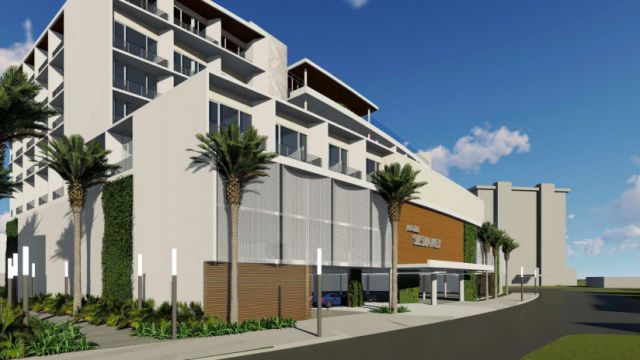
A rendering of a proposed 170-room, eight-story hotel on Calle Miramar on Siesta Key.
Image: Courtesy Photo
Four proposed hotels slated for Siesta Key are forcing local leaders and residents to confront those questions. The prospective developments range from 100- to 170-room projects that could reach as high as eight stories and 83 feet into the sky, threatening to alter the landscape of an area that currently has more of a Key West vibe than a Miami one.
But before ground breaks in Sarasota, opposition generally emerges.
After the announcement of plans for the hotels, a group of island residents created the grassroots Siesta Key Coalition, led by president Mark Spiegel—ironically, a commercial developer himself. The coalition's message is easily recognized by ubiquitous signs with bright red letters: “Stop high density hotels.” The posters were originally produced in a batch of 250, but eager residents speared them into their lawns in a matter of days. Another 250 were procured and, once again, snatched up by community members.
Those who live on Siesta Key are accustomed to an environment of long-term vacation rentals and condominium dwellers. (The barrier island currently only has one 55-room hotel.) And the key’s population is growing at a roughly 1 percent rate and is expected to do so for the next five years, according to population studies. It’s not that residents don’t want development on the barrier island, says Spiegel. But they do want it to fit with the island’s ambience—for example, a 30- to 60-room luxury boutique hotel with character. What Spiegel calls a “transient and touristy environment” is simply not consistent with the way Siesta’s residents view their home.
“This isn’t about a bunch of ‘not in my backyard’ people,” says Spiegel. “This is about trying to protect a valuable economic resource of Sarasota County. It's being smart about how you allow it to be redeveloped and grow so we don’t ruin it and let it go down the path of being highly commercialized and intensified, like other coastal towns.”
The only developer of the four to propose work on an existing hotel, Michael Holderness of Siesta Key Beach Resort and Suites, occupies an intriguing in-between stance. He thinks the beach has been left to deteriorate and become overrun with tourists, dredging and litter, and proclaims that he’s moving to nearby Venice. And yet he also wants to revamp his 55-room hotel to 170 rooms.
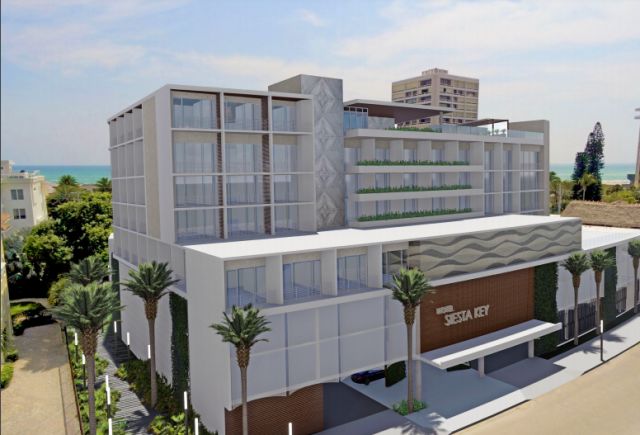
Another rendering of the proposed Calle Miramar hotel.
Image: Courtesy Photo
To be built, the projects require significant changes to county rules, including removing density requirements for hotels on commercially zoned land that would apply to the entire county, not just specific Siesta Key projects. Earlier this month, Sarasota County planning commissioners recommended approval of a unified development code amendment and a special exception that would allow the first hotel, an 170-room, eight-story resort on Calle Miramar in Siesta Key Village, to proceed with a higher height and more units than previously allowed.
“Do I think we’re going to make everybody happy? Absolutely not,” said commissioner Teresa Mast at the meeting. “But based on the studies and the numbers that I found, Siesta Key is in desperate need of a hotel.”
The Sarasota County Commission will vote on that project in late October. A second, 120-room hotel at 1266 Old Stickney Point Road will come up for a planning commission vote later this week and a county commission vote in early November.
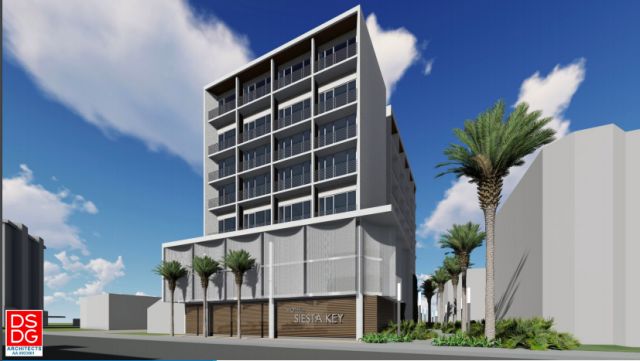
A third rendering of the proposed Calle Miramar hotel.
Image: Courtesy Photo
The approval of the Calle Miramar project is another in a long line of decisions that Siesta Key residents say are being made without their voices being heard, decisions like the plan to dredge Big Pass and to build a roundabout at the intersection of Beach Road and Midnight Pass.
Another new group, Save Siesta Key, wants to incorporate the barrier island as a separate municipality with its own city commission.
“Our role in creating this municipality is to give the community a voice in what happens here,” says Save Siesta Key vice-chair Tracy Jackson, whose love affair with Siesta Key started, as so many do, with a family visit. “We’re just not getting that now.”
The process is not without its obstacles. Leaders must write a charter, conduct a feasibility study and present it to the Florida Legislature. So far, more than 1,400 people have signed the group’s petitions, roughly 16 percent of the key’s 9,000-or-so population, according to Jackson. The goal is to have a special referendum that takes place next summer or fall. If approved, on midnight on Jan. 1, 2023, Siesta Key would become its own town.
“It’s really about local voices making local choices,” says Jackson. “When you live somewhere, you see the problems that exist within your community.”



